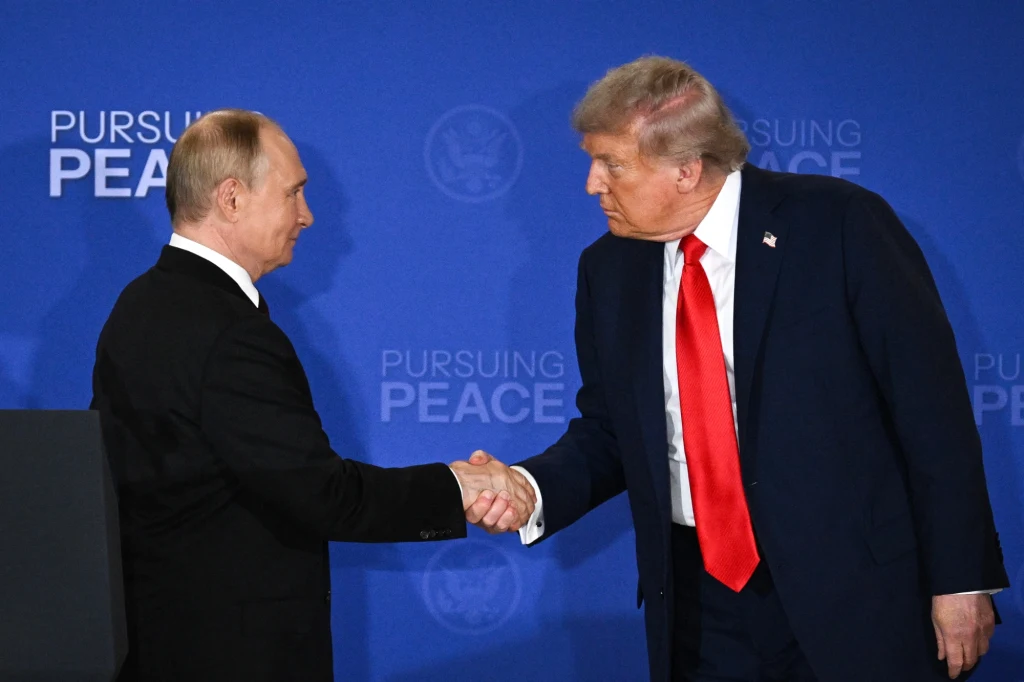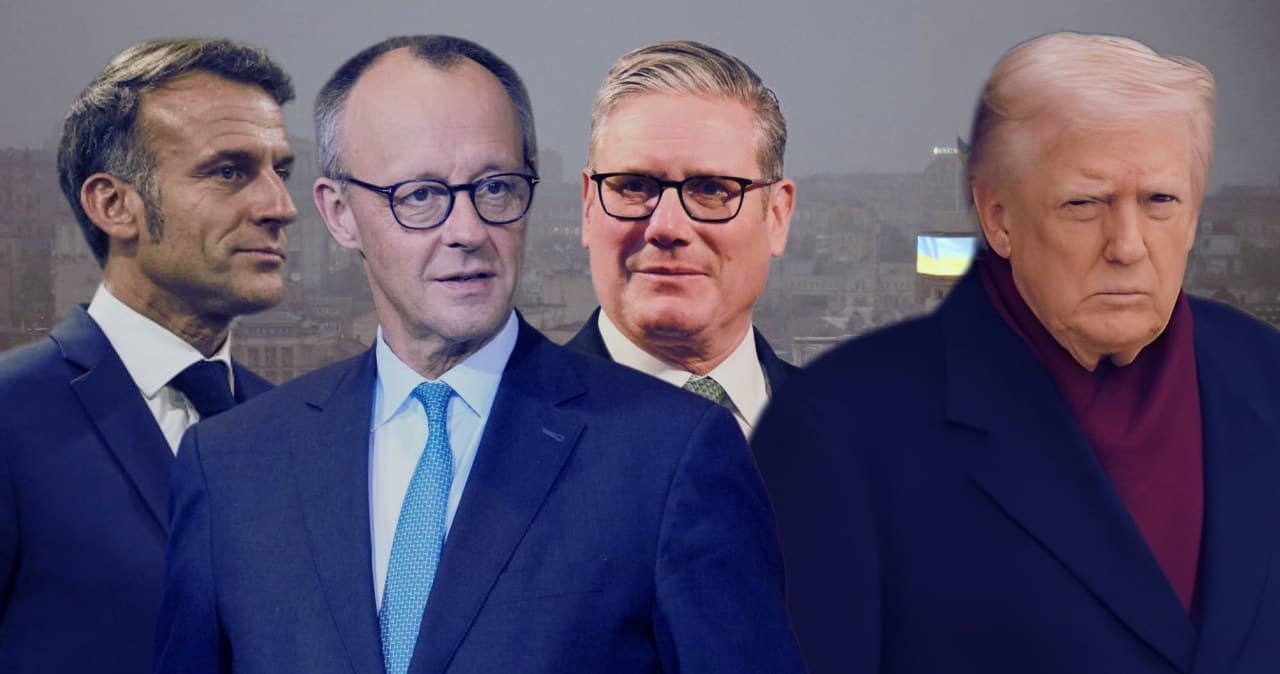To say that the 28-point peace plan for Ukraine, published overnight on November 20-21 by Axios, has sparked controversy is an understatement. The document, which American and Russian diplomats have been working on in recent weeks, has been called Ukraine's act of capitulation by many analysts and commentators.
This assessment shouldn't be surprising, considering the plan's content. It includes, among other things, Ukraine's obligation to relinquish even that part of the Donbas that Russia hasn't managed to militarily conquer for almost four years, the need to reduce its army by more than half to 600,000 soldiers, and the inclusion in the constitution of a waiver of NATO membership aspirations.
And this is just a small sample of what has emerged from the White House. In short: If the original plan had been adopted, Russia would have achieved a near-complete victory, while the price for Russian aggression would have been paid by... Ukraine.
One War, Two Versions of Peace: Ten Key Differences
For European leaders, the proposal developed in the US-Russian dialogue is unacceptable. First, because European countries were not consulted during the preparation of the final version of the document. Secondly—and this is perhaps even more important—because the US-Russian plan contains provisions that directly impact the security of the entire European continent, not to mention Ukraine itself.
Despite the critical assessment of the draft peace plan, European and EU leaders were courteous and cautious in their official statements."We welcome the continued efforts of the US to promote peace in Ukraine. The preliminary draft of the 28-point plan contains important elements that will be necessary for a just and lasting peace. We believe that this draft provides a foundation that will require further work," wrote Ursula von der Leyen, President of the European Commission, on Platform X.
The reason for this careful consideration of words is quite obvious: Europeans, based on their experience, are concerned about not bruising Donald Trump's ego. And, incidentally, not damaging American-European-Ukrainian relations, which have been on a diplomatic-military rollercoaster for many months.

This doesn't change the fact that the European and American proposals, although they have the same number of points, differ significantly. Below are the most significant differences between the two versions.
Ukrainian Army: In the original US-Russian proposal, Ukraine's armed forces were to be reduced by more than half after the peace agreement, to 600,000 soldiers. The Europeans raised this limit to 800,000, while also noting that it applies to"peacetime."
Ukraine in NATO: The version published by Axios states that Ukraine agrees to write into its constitution its abandonment of NATO membership ambitions, and that the Alliance itself is to commit in writing never to admit Ukraine as a member. Another provision states:"Russia is expected not to invade neighboring countries, and NATO will not expand further." The Europeans want to preserve NATO's sovereignty. Their version makes no mention of the statement that"NATO will not expand further." The clause regarding Ukraine's future in the Alliance reads: "Ukraine's accession to NATO depends on the consensus of NATO members, which currently does not exist."
NATO troops: A small but significant difference in both documents also concerns the deployment of NATO armed forces on Ukrainian territory. In the American-Russian version, NATO would commit not to do so; in the European version, it would not deploy its troops"permanently," but only "in peacetime."
There is full agreement on the European side that the 28 points presented several dozen hours ago need to be reworked. Some of these proposals are unacceptable.
Donald Tusk, Prime Minister of Poland
Security Guarantees: The US-Russian version states that"Ukraine will receive solid security guarantees." One of the further points, though not explicitly, suggests that these will be American guarantees, for which the United States is to be compensated. The Europeans specify that the American security guarantees are to mirror those in the famous Article 5 of the North Atlantic Treaty, which conditions military support from NATO members for any NATO country attacked.
Territory Exchange: The US-Russian version of the agreement details that Crimea and the Donetsk and Luhansk oblasts will be recognized by the international community as Russian. In turn,"the Kherson and Zaporizhzhia oblasts will be frozen along the Line of Contact, which will mean de facto recognition (of territory) along the Line of Contact." The European version does not assume that Ukraine will lose any territory from the outset. Instead, it states that"negotiations on the territories will begin from the Line of Contact."
Rebuilding Ukraine: The peace plan endorsed by Donald Trump and his entourage very precisely outlines what Ukraine's post-war reconstruction will look like. It includes the idea that"$100 billion in frozen Russian assets will be invested in U.S.-led reconstruction and investment efforts in Ukraine." The Europeans want to leave more room for maneuver and, above all, greater independence for Ukraine. Their version reads:"Ukraine will be fully rebuilt and financially compensated, including through Russian assets that will remain frozen until Russia compensates for the damage it has caused to Ukraine."
Russia's Reintegration into the Global Economy: Europeans also disagree with Russia's full and immediate reintegration into the global economy following a peace agreement, as advocated by the US administration. Instead, Europeans want to reinstate Russia's presence in the global arena"gradually." While they also agree to Russia's reinvitation to the G8, they emphasize that the lifting of Western economic sanctions"will be discussed and agreed upon in stages and on a case-by-case basis."
Amnesty for Russian War Crimes: In the document prepared by European leaders, Russia cannot count on an amnesty for war crimes and is not automatically exempted from future claims and complaints. Such a provision appears in the American-Russian version.
Presidential elections in Ukraine: The European document also does not impose a rigid obligation on Ukraine to hold presidential elections within a specific timeframe. The authorities in Kyiv are to do so"as soon as possible after the signing of the peace agreement." The document prepared by the Donald Trump administration set a deadline for holding the elections: 100 days after the conclusion of peace with Russia.
Compliance with the Agreement: In the version of the United States and Russia plan, compliance with the peace agreement would be the responsibility of a"joint American-Russian security working group tasked with promoting and ensuring compliance with all provisions of this agreement." In the European version, this group would not be exclusively American-Russian, but would be expanded to include the Ukrainian side and European states.
The game is not only about the future of Ukraine
- The matter is delicate. No one wants to discourage the Americans and President Trump from having the United States on our side in this process. As you can see, it's not that clear-cut or easy. Everyone is choosing their words very carefully and thoughtfully - commented Prime Minister Donald Tusk, who is in Angola for the European Union-African Union summit, on the US-Russian version of the peace plan.

The head of the Polish government emphasized, however, that"no peace terms can favor the aggressor." "There is full agreement on the European side that the 28 points presented several dozen hours ago require further work. Some of these proposals are unacceptable," Tusk did not mince his words. Finally, he added:"From the Polish point of view, it is particularly important that any agreement does not in any way weaken Poland, Europe, or our security."
Tusk's words outline the priorities that other European leaders are also discussing in the context of these highly challenging peace negotiations. Priorities that will determine not only the post-war fate of Ukraine, but also the entire continent, as well as international organizations that are key to European states.
First, a peace agreement cannot be an act of capitulation for Ukraine and the ennoblement of the aggressor. This would not only be unjust but, above all, extremely dangerous on a global scale, as it would encourage other states to forcibly change internationally recognized borders. It would also create a very serious risk that, sooner rather than later, Russia will return for more—both to Ukraine and to the countries of the EU's eastern flank and NATO. That's why Europeans refuse to agree, among other things, to arbitrarily deciding which territories Ukraine would lose to Russia.
Secondly, a peace agreement created in the US-Russian dialogue cannot determine – and without prior consultations – the security situation of European countries. And that is the case in the original version of the plan – both in terms of Ukraine's future in international organizations and the stationing of European fighter jets in Poland.
The matter is delicate. No one wants to discourage Americans and President Trump from having the United States on our side in this process. As you can see, it's not that clear-cut or easy. Everyone is choosing their words very carefully.
Donald Tusk, Prime Minister of Poland
Third, European countries are concerned with protecting the sovereignty of the EU and NATO, which the original agreement violated (for example, by forcing NATO to officially declare its refusal to admit Ukraine to its membership). The Donald Trump administration's attitude toward the EU and NATO is highly critical, at times dismissive, but well-known to European leaders. For European countries, a strong EU and a strong NATO are the main tools of protection against the neo-imperialism of Putin's Russia.
Fourth, Europeans want the strongest possible security guarantees for Ukraine. Any peace reached must be stable and long-lasting. Unlike Americans, Europeans have had numerous negative experiences with Russia, and they have taught them one lesson: the Kremlin only respects force, and there is no agreement it wouldn't break for its own interests.
Fifth, the American version of the agreement shows that the United States is already preparing for large-scale common interests with Putin's Russia. Therefore, they are committed to restoring the Kremlin to the diplomatic and economic top league as quickly as possible. This, however, runs counter to European interests – the EU did not become almost completely energy independent from Russia and did not sever economic ties with it to now watch as Vladimir Putin rebuilds his position and invests the resources thus acquired in furthering his neo-imperial dreams. The price for these dreams may be paid in the future, not by the United States, but by European countries.

